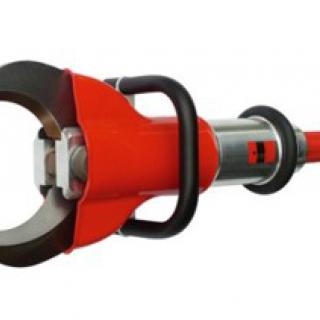Hydraulic cutters are specially designed rescue equipment for cutting bodywork parts. They are used for rescuing trapped or enclosed accident victims. Driven by a hydraulic power unit it is possible to cut door and roof pillars, posts and sills etc. with the cutters. Hydraulic rescue systems have three basic components: an electrical or gasoline engine power unit, a hydraulic fluid pump, and a reservoir with associated valves to control direction and pressure. The hoses transmit the pressurized fluid to the cutters, spreaders, rams, etc. Electrical power has been used with vehicle extrication tools first through power cords linked to electricity generators and more recently through batteries.
With wider cutter openings, the manufacturers are constantly aiming to innovate and offer cost-effective extrication tools. Manufacturers incorporate various features in the extrication tools in order to enhance performance and improve ergonomics, including anti-vibration technology, noise control, and cordless designs. Some of the key breakthroughs in the global extrication tools market include the development of telescopic rams with a laser pointer on the active ram head to allow the user to hit the mark the first time.
Methodology:
The FE analysis generally includes –
1) Finding the forces on tools under different operating conditions. For example, calculation of squeezing forces on Spreader (Combi-tool) or on the blade teeth.
2) Simulating the stress wave propagation in the displacement of piston.
3) Calculation of spreading force, hinge force on Spreader or blade teeth.
The tests may also be carried out according to NFPA 1936 regulation. This standard specifies the performance requirements for powered rescue tools and components that are used by emergency services personnel to facilitate the extrication of victims from entrapment.

